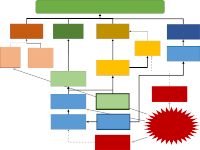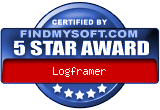Conclusion
 Both Theory of Change and Logical Framework methods are valuable instruments. ToC is able to provide a deep understanding of the context(s) you are working in, how change can be achieved in a complex setting and what the role (contribution) of your organisation can be. Once you’ve identified the big outcomes your organisation can work on, you can identify intervention strategies and use the logical framework to design the specifics of each particular intervention and how you are going to execute and manage it.
Both Theory of Change and Logical Framework methods are valuable instruments. ToC is able to provide a deep understanding of the context(s) you are working in, how change can be achieved in a complex setting and what the role (contribution) of your organisation can be. Once you’ve identified the big outcomes your organisation can work on, you can identify intervention strategies and use the logical framework to design the specifics of each particular intervention and how you are going to execute and manage it.
This combination of Theory of Change and logical framework combines the best of both worlds, but it is not the only possible way. Many organisations use ToC to manage their projects rather than using a logframe approach. However there is a danger here that such a ToC will focus entirely on what the organisation will do (as it describes its intervention) and loose the broader perspective. Or that the organisation will claim that it will deal with all the needs of the target group(s) while in reality it doesn’t have the capacity to do so.
Something that is less present in many manuals is how to formulate the ToC in a participatory way, involving (potential) beneficiaries and other stakeholders. There is a danger that ToC becomes a top-down exercise, created by a small group of specialised staff. While this can be your starting point, it is important to get the input and feed-back of others on your theory. This will allow you to refine it in the beginning and review it later on, so you can create that beautiful piece of art that explains it all. Just make sure that the artwork doesn’t become more important than the content!
Theory of Change helps us to make our implicit assumptions explicit and pushes us to reflect on how we will deal with these assumptions, to deal with them and to monitor them over time. This helps us to understand the ‘boundary conditions’ of our interventions and what we can/must do when these conditions change over time. But the assumptions also provide us a valuable entry point for evaluation. By making them explicit they can be tested during an evaluation, which provides us an opportunity for organisational learning and improvement of our strategy and our interventions over time. This is what makes Theory of Change dynamic rather than a fixed product.





Add new comment